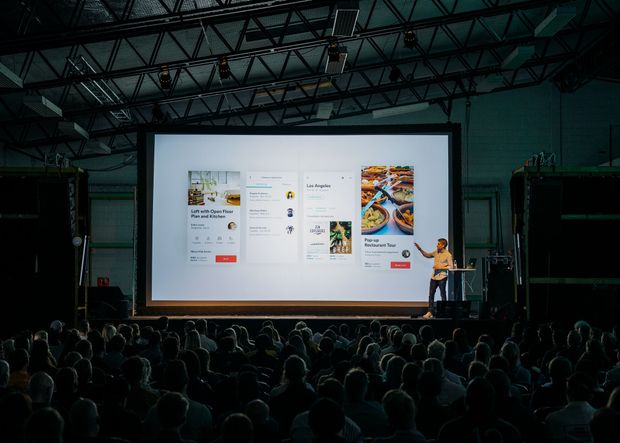This article is part of our eLearning series. To learn more about creating the ultimate learning and development system, check out our master guide: What's missing in your company's eLearning strategy.
Bombastic title? Perhaps to some, but the answer is still: YES. Digital flashcards can fix broken Learning and Development (L&D) in many organizations.
As a fun hypothetical, let’s say I’m an L&D professional with a profile on Match.com—the personal dating site where, for today, one can also find matches in professional life! Here’s my intro:
Experienced, hard-working L&D professional ready for a change—seeking a match for my training needs. Do you get better results at a lower cost? Can you engage employees with the attention spans of houseflies? Can you break mountains of info into easily-absorbed, micro content? Are you flexible, secure, and easy to update? Can you move effortlessly from mobile to desktop and back? Where are you, my perfect training support tool?
Someone named Ms. Digital Flashcards is very interested. And she just made me her favorite.
[Check out: 'Product knowledge training: Unleashing the beast in your salespeople'.]
Why are we matchmaking Learning and Development and flashcards?
The quick background is that when we started Brainscape, we were mainly focused on one goal: to create the very best mobile flashcard study tool. We combined great technology with under-utilized cognitive science—for students, teachers, and learners of all ages in consumer education markets. And while we’ve helped millions facing everything from homework and tests to high-stakes assessments, another market—another type of learner—kept calling on us.
Where might people need to learn efficiently in an even HIGHER-stakes environment than that faced by students? Yes: in professional life, where success is dependent not only our on education and experience, but also on ongoing professional development and support.
We kept hearing this over and over:
Sure, I wish I had this in school. And I’m learning Spanish too. But I’m REALLY glad we found it at our company ...
When you hear that over and over, you eventually take it in, and that applies to us as well. A few years ago Brainscape finally started providing adaptive learning for companies. And it was our users who taught us about the match between digital flashcards matching real challenges in L&D.
Here are 5 learning and development challenges that your company may be currently facing, and 5 ways that Brainscape's flashcards app is your perfect match.
5 learning and development challenges

1. Gap between importance and results
The gap between the importance of L&D to smart company leadership and the actual effectiveness of current solutions is large and growing. L&D professionals are under more pressure than ever to get results that translate into improved employee performance. What’s causing this?
2. Information overload
From expensive and ineffective solutions. Employees need to know more than ever. But instructor-led training, exotic videos, and experiential eLearning modules are both expensive and too often ineffective except as time-consuming, introductory experiences.
Other L&D resources are formatted so poorly for engagement, learning, and retention that they pretty much provide only a checkmark for “we have it”—not desired results from being learning experiences optimized for real knowledge transfer.
Finally, these “learning experiences” [sic] sit in unwieldy, outdated LMS interfaces providing poor context and consistency. Sure, even if “it’s all in the LMS” were still true (it’s not), who uses much of it? Who finds anything they want quickly? The answer, of course, is to fix it. Except ...
3. Curation is hard to maintain and update
This has always been a massive challenge in L&D. Those ideals—
- Aggregating all the requisite tools and resources,
- Organizing and contextualizing them to drive usage and engagement; and
- Maintaining their accuracy and alignment to company goals and employee needs
... seem harder to pursue than ever in many organizations. And even if it were easy to curate, there’s also the fact that ...
4. Budgets are not keeping pace
While challenges have increased, budgets often have not. Sure, this is competitive business reality. But what it all means in L&D is: “Get better results for larger challenges using outdated, calcified solutions with a smaller budget!”
Fun.
And then employees themselves are piling on ...
5. Employees want change
Attention spans are decreasing (or gone?). Learners want on demand, self-directed, and collaborative learning models. They want micro and mobile content, not mountains of training resources or classroom hours for which they have no time.
The best employees are even driving the lawyers crazy by creating their own solutions. They have less time for training than ever, so they are drifting to evening and weekend self-study tools. Sometimes in insecure learning environments.
These are five real challenges. And I’m sorry to the L&D professionals for whom reading that list may have hit too close to home. Fortunately, Ms. Digital Flashcards can help you!
[See also: How great companies are using Brainscape]
Digital flashcards deliver

1. Results: not your father’s flashcards
There’s a big difference between stacks of white index cards and digital flashcards done right. Today’s smarter flashcards are a multimedia canvas. Bite-sized text can now be augmented by images, audio, and even links to other resources. And one stack can now serve thousands of learners on different devices and desktops.
And it gets better. Cognitive science has known for decades that the best principles for improving learning and retention include spaced repetition, metacognition, and active recall. The best flashcard platforms use adaptive algorithms and fine-tuned UX to optimize a learner’s personal exposure to each concept.

Learning is faster. Retention is stronger. And one can make progress in even 5 minutes—anywhere.
2. Mobile microlearning content to defeat information overload
Digital flashcard content not only can be learned / retained more efficiently, but it also provides a more accessible format.
Many employees immediately prefer micro and mobile content that they pull to most of the old push experiences they’ve had in classrooms and lengthy eLearning modules. “They supplemented the product video with a deck of flashcards. I teach myself the critical facts and practice answers to the likely questions from buyers. And searching for answers when away from my desk so much easier!”
Yes, the format also provides convenient mobile reference as well. Bottom line: Info overload can be defeated now—and even more easily next year because ...
3. Easy curation and updates
This benefit is a revelation for many L&D professionals. Changes in products, regulations, or compliance standards routinely create major headaches—and large projects on department roadmaps. Updating and replacing old assets is painful.
But digital flashcards—with their inherent nature as discrete items, make updates almost as easy as editing a cell in a spreadsheet. The best smart flashcard platforms provide intuitive authoring, quality assurance, and distribution tools that allow L&D professionals and employees to efficiently curate and contextualize micro-content as needed.
4. Inexpensive solutions
Both in general and especially relative to other choices, digital flashcards afford L&D professionals a remarkably efficient way to leverage their budgets toward significantly better tools and results. The ease and cost-effectiveness of authoring, deployment, and curation will put digital flashcards immediately among your favorite approaches for delivering engaging training and reference solutions.
5. Employee engagement
Overworked, distracted, and impatient folks increasingly want micro and mobile self-directed development solutions that respect their schedule and needs.
Digital flashcards are a direct match with those desires. And they also can enhance the “70” and “20” in 70:20:10.
One example: Some companies have started using digital flashcards as a social, shared-knowledge sandbox in which employees submit or author questions they feel unprepared to answer in the field. Company experts may then author the answers to the flashcard with the approved response or process they wish to train. Yes, companies have done this with FAQs forever. But now they put the Q/A into their digital flashcard environment. And they get not only a reference tool, but also real democratic learning.
[See also: How to create eLearning that is actually engaging]
Clearly, Ms. Digital Flashcards may be worth a date via Match.com—or in the real world of L&D. Marriage might not be far off for many!
If you’d like to further explore the potential benefits of using a digital flashcard platform in your organization, please check out Brainscape’s employee training app.
References
Deloitte University Press. (2016). Global Human Capital Trends 2016. In Deloitte [Report]. https://www2.deloitte.com/content/dam/Deloitte/global/Documents/HumanCapital/gx-dup-global-human-capital-trends-2016.pdf
Klein, L., Earl, E., & Cundick, D. (2023, May 9). Reducing information overload in your organization. Harvard Business Review. https://hbr.org/2023/05/reducing-information-overload-in-your-organization
Kruse, K. (2021, October 11). Move over 70-20-10 rule, 3-To-1 is the new model for learning. Forbes. https://www.forbes.com/sites/kevinkruse/2021/10/04/move-over-70-20-10-rule-3-to-1-is-the-new-model-for-learning/
Sharmin, N., & Chow, A. K. (2020). Augmented Reality Application to Develop a Learning Tool for Students: Transforming Cellphones into Flashcards. Healthcare Informatics Research, 26(3), 238–242. https://doi.org/10.4258/hir.2020.26.3.238
